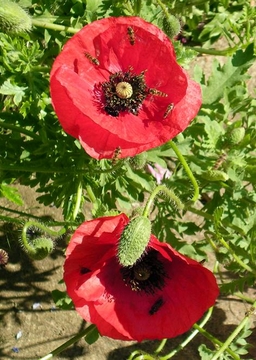Harry Cranfield
Home » Harry Cranfield
Harry Cranfield |
||
|
Harry Cranfield was the son of Charles and Edith Cranfield. Harry was born in Eltisley on 15 May 1879, the middle child of seven children in the family. The Cranfields lived in Potton End and Charles was a roadman, employed by the County Council. We do know that on 20 July 1912 Harry boarded the White Star liner Megantic at Liverpool and arrived in Quebec on 28 July, when the ship’s passenger list describes him as a ‘Returned Canadian’. We have not been able to find any trace of him on an earlier ship travelling to or returning from Canada, but it is quite possible that Harry did travel to Canada between May 1903 and August 1910. Again, we don’t know who Harry was working for in Canada, but when he enlisted in March 1916 he described his trade or calling as a labourer, and he was living at the same address, 1209 Queen Street West, Toronto, as the Riseley family, who he must have known from his childhood in Eltisley. Harry was passed as medically fit for service; however he had not told the truth about his age when he enlisted. He had declared that he was 27 years 10 months old, when he was, in fact, two months away from his 37th birthday. He said he was single, he gave his mother’s name and address in Eltisley as his next-of-kin. Harry’s battalion left Halifax in Canada on 25 October 1916, sailing on the ss Mauretania. They arrived in Liverpool on 31 October 1916 and crossed to France on 29 November. Between the 9 and 12 April 1917 the four Divisions of the Canadian Expeditionary Force combined together to attack the Vimy Ridge, an escarpment of high ground about five miles to the west of Arras. The objective was to take control of this stretch of high ground before the proposed offensive to take Arras from the enemy, so that there would be no danger of enemy fire from the high ground for the forces attacking Arras. The attack was preceded by a three-week period of artillery bombardment, the third week being the heaviest, to destroy enemy trenches and defences. The attack began at 5.30am on Easter Monday, 9 April, in conditions of sleet and snow. By 7.30am the 3rd Division, of which 58th Battalion was a part, had reached their objective at the western edge of the Bois de la Folie. By the night of Thursday 12, all Divisions had reached their objectives and the Canadian forces were in control of the Vimy Ridge, at a cost of 3,598 killed and 7,004 wounded, of which the 58th Battalion had suffered 23 killed, 81 wounded, 1 gassed and 11 missing. The number of German casualties was not known; 4,000 German soldiers were taken prisoner. The 3rd Battle of Ypres, which had begun in July 1917 was not proving to be the big breakthrough that the Allies had hoped for. Men were fighting in terrible conditions, the unprecedented wet weather and the heavy shelling turning the ground to muddy swamps. In October 1917 the Canadian Corps were in the centre of the front line of attack, between the British on the left and the Anzacs on the right, in the assault on Passchendaele. Harry was killed in this action on 26 October 1917; he was 38 years old. By the 6 November, when Passchendaele had been taken, Canadian forces had suffered casualties of over 15,000 dead and wounded. |

Harry Cranfield
|
|
| Harry is one of the soldiers with no known grave; he is commemorated on the Menin Gate at Ypres. | ||
